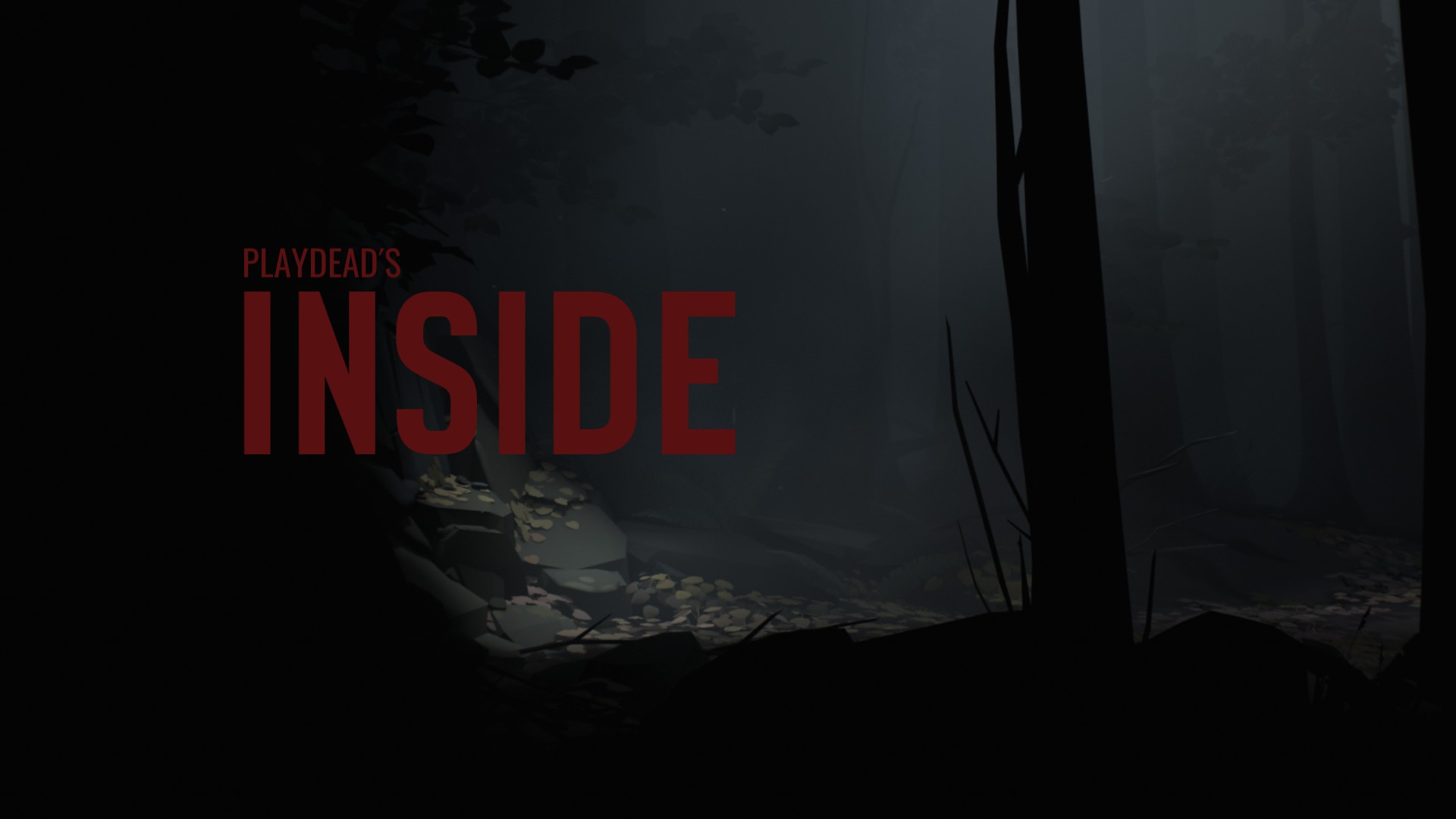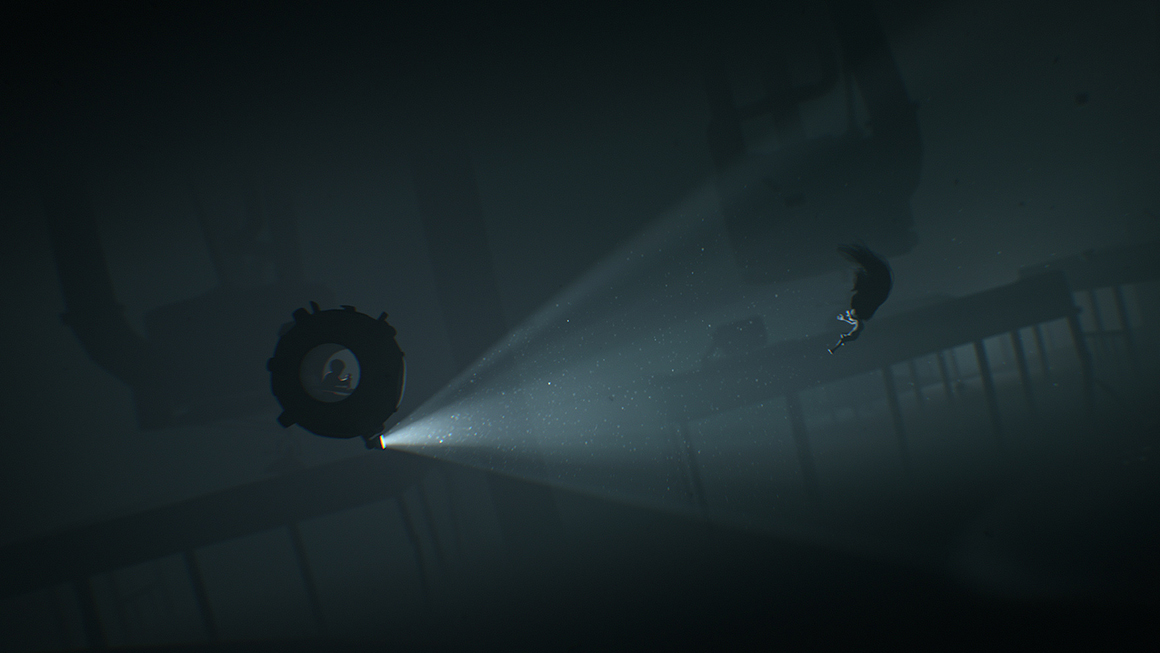An absolute dream or nightmare?
Pretension is a fickle element that has slowly seeped its way into the contemporary gaming community, whether if it’s an added spice that caters to your flavour or an intolerable trend that’ll shortly meet its demise. With the rising popularity of the smaller, independent development, video games have reached a level of obscurity and experimentalism that was seldom found in the fostering years of gaming. During the indie development scene’s infancy, Copenhagen based developer Playdead arguably kick-started, at the very least contributed to, the popular indie movement with their atmospherically eerie experience, Limbo. To some, Limbo was an inaugural experience that was equally brilliant as it was obtuse; to others it was a hollow vessel with a high cadence for pretension and a shallow excuse for gameplay. I reside somewhere in between the high praise and the intolerable distain; it was an interesting gaming experience that ultimately forgot to be fun. Playdead’s second effort has been taken by storm, receiving unanimous praise from copious gaming outlets, with critics dishing out perfect scores left, right, and center. After my first brief playthrough, my emotions were rather conflicted as I couldn’t differentiate astonishment from confusion, enjoyment from disappointment. It’s been a little over a week since I concluded the three-hour experience, and after marinating my conflicted thoughts properly, I can safely say that Inside is an excellent game that will definitely not resonate with everyone. Some of you will absolutely adore this abstract gem, some of you will loathe it with a fiery passion, I cannot stress its polarizing nature enough! It’s definitely not the masterpiece that critics are claiming it to be, but it’s most certainly an experience that I immensely enjoyed. Just understand that you’ll be left with more questions than answers once the credits drop, and its rather obtuse ambiguity can be perceived as intriguing at best and pretentious at worst. Lastly, if you didn’t enjoy Limbo in any capacity, then chances are that Inside won’t have the required finesse to sweep your heart. Inside is a haunting experience, that simply dug its claws deep within me and ceased to ever let go.

Being a spiritual successor of sorts to Limbo, Inside takes an abundance of cues from its older brother, everything from its atmospheric nature to its responsive yet simplistic gameplay bear a familiar undertone. Inside’s rather ambiguous thematic and storytelling elements are both its best and worst quality, a double-edged sword of exposition. While taking place in an obvious dystopia of sorts, Inside clearly boasts thematic elements of control and slavery, both in a rather tasteful yet bombastic manner. You could argue that Playdead are inferring messages of individuality, with clear meta elements of identity and fighting oppression. At times these elements of status quo rebellion bear a rather forceful quality and Playdead’s intention is downright questionable to say the least, all solidifying that aforementioned pretentious aura. An interesting but also frustrating element to Inside is that no context is given to the world or narrative, and nothing is or will ever be explained to you, leaving considerable room of interpretation. You simply develop an understanding that, as a boy, you are escaping this oppressive conformity, infiltrating a malevolent facility of sorts for some unknown reason and avoiding confrontation all together as almost every living creature is trying to harm you in some manner. Inside is at its prime during its first hour or so, as its mysteries are completely subjected to your own speculations and the experience is far more enjoyable when there’s more to discover around the corner. Contemplating what disturbing scenery awaits you in the coming minutes is surprisingly exhilarating, and possibly most surprising of all is the fact that Inside’s obtuse and demented scenarios never failed to meet my expectations. Without spoiling a shred of its brilliance, Inside manages to intrigue and surprise simultaneously, while never holding your hand or spoon-feeding exposition to you, allowing you to experience it at your own pace. However, there is one exception to the rule of Inside’s brilliance, and that is its rather languid ending; now by ending, I am not pertaining to Inside’s particular insane moment or the complete gameplay shift that follows, I am purely speaking of the exact final moment of the game. It’s not necessarily bad, but it’s not satisfying in the slightest and this here disappointment brings up Inside’s double edged sword, its ambiguity. Throughout the crux of the game, as I previously mentioned, some of its main enjoyment is attained through speculation of Inside’s core. However, Inside relies on this level of interpretation far too much that it loses its sense of purpose and direction, leaving a bad taste in your mouth. In the end, Inside unfortunately conjures up more questions than answers, a rather disappointing structure to follow; while in the case of other disappointing forms of entertainment – the television series Lost for example –they developed a considerable amount of context before resorting to sheer interpretation. However, regardless of my personal qualms, Inside’s ambiguous tale is an intriguing experiment that certainly won’t jive with everyone, but it will definitely percolate discussions and theories, and I, for one, am glad to be part of that discussion. Following the footprints of its spiritual predecessor, Inside boasts a rather simplistic colour palette, where the majority of the game’s world is rendered in a monochromatic aesthetic, with particular points of interest subtly splashed with colour. It’s a rather simplistic form of game design but it’s aesthetically pleasing and its subtle nature implements an effective method of navigation while never being obtrusive. Inside, from a graphical and audio standpoint, is technically sound, with each element not pushing any boundaries by any stretch of the imagination but implementing a resounding yet subtle sense of quality.

Equally as polarizing as its presentational and narrative counterpart, Inside’s gameplay embodies a rather simplistic nature while bearing some interesting complexities deep within. At its core, Inside is a 2.5D puzzle platformer, taking thematic and gameplay cues from Playdead’s first effort. Inside’s puzzles are definitely easier than the majority found in Limbo, but despite their noticeable dip in difficulty, these perplexities end up being far more enjoyable. Inside’s puzzles exude an absolutely tasteful sensation and are spaced out accordingly and impeccably; Limbo’s puzzles stroke an abundant chord but their purpose felt rather disjointed, as if their existence were solely constructed for the sake of having puzzles. Inside, while having fewer in total, spends more of its time developing its world and allowing the player to bask in its horrifying beauty, while incorporating intelligent puzzles that fit the current situation and universe. Inside also segments interesting gameplay elements that appropriately fit the demented and twisted nature of its respective world, and while delving any further would slowly tread into spoiler territory, let’s just say these particular elements are brilliantly demented and exceptionally intense, resulting in some of the best moments found throughout Inside. On top of its rather intuitive underwater segments – which primarily emphasizes Inside’s excellent sense of horror and intensity – Inside’s controls are noticeably smooth, with a surprising notion of polish. As with its spiritual predecessor, Inside heavily relies on its trial and error formula, in regards to deciphering the best course of action or how to complete a puzzle, and while it’s not nearly as inventive as Ori and the Blind Forest’s implementation, it certainly is imitable and effective. Death is an occurrence that’ll grow familiar, with each death serving as a lesson to the mistakes you’ve made, approaching each situation with a sliver of newfound insight. Please be aware that, as with Limbo, your encounters with death will be met with a slew of gruesome animations that’ll definitely fancy your demented tendencies. Lastly, even though Inside is a rather linear experience, there are certain instances where Inside will feed off of your curiosity and reward you for straying off the beaten path ever so slightly. Here you will find collectible orbs that at first glance, serve no real purpose other than catering to one’s collect-a-thon OCD, but collecting every last orb will uncover Inside’s secret/alternate ending.

Inside is an experience in every meaning of the word, whether or not if it’s a worthwhile one is a matter of perspective and preference. Its ambiguous and downright pretentious nature will undoubtedly be off-putting to some but its interpretive discussions and intriguing thematic elements will captivate others. Its gameplay may lack the required depth to reach its presentational heights, its lacklustre ending leaves much to be desired, and its pretentious undertones come off as trite and forceful, but by god is it an enthralling experience that quickly capitalizes on the elements that made Limbo work, while cutting off the unnecessary fat surrounding the mass. Its simply haunting, demented, and downright disturbing in the best manner possible, creating something quite fantastical that emits auras of beauty as it does horror. Inside is a hard package to review as so many elements that make it a fantastic experience can be perceived as the crux of its problems through a different looking-glass, but it somehow just worked for me. It’s a bite-sized experience that surely won’t take you long, but deserves your attention nonetheless. It’s a polarizing experiment that merges the pleasant tranquility of a dream with the obtuse, frightening nature of a nightmare.
9.0


As someone who detests Limbo (AKA the “Go right” game), is there any chance whatsoever that I would find Inside appealing?
LikeLiked by 1 person
To be honest, I’m not quite sure. If I had a gun to my head, I’d say that you wouldn’t enjoy it. It builds off of Limbo, and if you didn’t even remotely enjoy Limbo, then most likely Inside won’t do it for you. However, I hope you do play it sometime in the future, just so you can be part of that conversation and I’d simply like to hear/read your opinion on it. Plus you’ve been playing plenty of crappy games as of late and I’d like to think that Inside is at least better than those in your eyes!
LikeLiked by 1 person